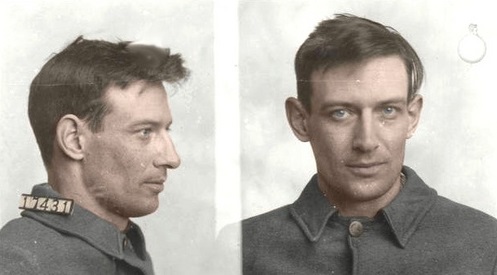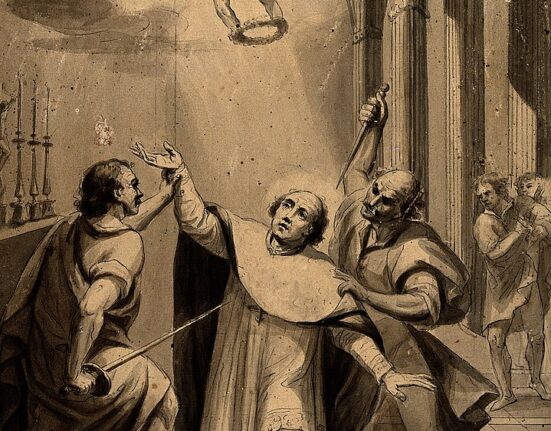Alcatraz Island in San Francisco, California is legendary for its time as the site of one of the most infamous prisons in history. The “inescapable” island once housed notorious gangsters such as Al Capone and George “Machine Gun” Kelly. Against the foggy backdrop of the San Francisco Bay’s rocky shoreline, this prison became famous as the location where the most unmanageable prisoners within the Federal prison system were sent to serve their time. (1)
The name “Alcatraz” was given to the island by an 18th century Spanish explorer. While the exact meaning of this word is unclear, it likely means something like “pelican” or “sea bird.” To this day, the island is home to a sanctuary for breeding sea bird colonies. Birds ruled the island before it ever became a prison, and have continued to thrive on Alcatraz long after the prison ceased operations. (2)
Despite this, the most memorable link between Alcatraz and avian life comes, not from the birds which live and breed on the island, but in the form of an infamous figure whose apparent fascination with birds sits in startling contrast with his life of violent crime: Robert Franklin Stroud, the “Birdman of Alcatraz.”
More Strange History: Franklin: The U.S. State That Never Was
Who is the Birdman of Alcatraz?
In 1909, Robert Stroud was just eighteen. Though young, Stroud had already embarked on the path that would eventually land him in the United States’ most notorious penitentiary. In January of 1909, Stroud was acting as a “pimp” in Juneau, Alaska for a woman named Kitty O’Brien who was almost twenty years his senior. When a bartender acquaintance failed to pay Ms. O’Brien, and may have even beaten her, Stroud took matters into his own hands. Details on the ensuing struggle are murky, with some accounts painting Stroud as a cold-blooded killer and others chalking the incident up to the chaos of a brawl, but in any case the confrontation ended with the barman deceased via a gunshot wound. Stroud surrendered to the police and was found guilty of manslaughter. He was sentenced to 12 years in the McNeil Island Corrections Center in Washington. (3)

Stroud would not be at McNeil Island for long. Within just three years, Stroud earned a reputation as one of the facility’s most violent and unpredictable offenders. After allegedly stabbing a fellow inmate, he was transferred to Leavenworth Prison in Kansas. Leavenworth would be the site wherein both aspects of Stroud’s notoriety would originate. His violent reputation was bolstered by the slaying of a prison guard in 1916. The murder of Andrew F. Turner in front of over a thousand witnesses earned Stroud a death sentence conviction which was subsequently commuted to life in solitary confinement by president Woodrow Wilson. Apparently, Stroud’s mother had convincingly pled for his life. (4)
More Interesting History: Samuel “Black Sam” Bellamy: The Richest Pirate in History
The Birdman’s Canaries
Now incarcerated for life and cut off from most human contact, Robert Stroud had little to occupy his time, until one day he encountered three nestling sparrows which had fallen onto the grounds of Leavenworth’s recreation yard. Caring for these sparrows was the catalyst which ignited Stroud’s keen interest in birds. Perhaps sensing that a productive use for Stroud’s time would benefit everyone involved, the staff at Leavenworth allowed Stroud to keep, breed, and study hundreds of birds, most of which were canaries. Thus the “Birdman” was born. (5)
Stroud would remain at Leavenworth Prison for over twenty years. During this time, he authored two books on canaries, the most noteworthy of which being his 1933 work, Diseases of Canaries. This work had a pretty serious impact and earned the convicted killer a bit of sympathy from within certain natural science circles. This text is credited with developing remedies for several avian pathologies including hemorrhagic septicemia. Contemporary experts disagree over whether Stroud’s remedies are truly effective, however they were quite well received at the time. (6)

More Fascinating History: What is the Pedro Mountain Mummy?
Stroud’s Stumbling Blocks
Stroud’s makeshift laboratory behind bars was not without its problems. For one thing, Stroud began receiving such a significant quantity of correspondence that Leavenworth required a full-time secretary to screen his inbound and outbound letters. Furthermore, his cell was filled to the brim with birds, many of which were allowed to fly freely. This meant that the place was an absolute mess. Thus began a drawn out feud in which the prison attempted to remove Stroud’s birds and equipment and Stroud and his supporters lobbied for his right to continue his activities. This culminated in Stroud’s marriage to a woman named Della Mae Jones. Jones was an avian researcher with whom Stroud had been corresponding. The two figured that Stroud could not be transferred out of Leavenworth, and thus away from his birds, if they became legally married in the state. Their marriage would also deter prison staff from preventing their correspondence. At this point, Stroud and Jones were business partners, selling avian medicines based upon Stroud’s extensive research. (7)
The marriage strategy was effective for a short time. Eventually it came to the attention of Leavenworth’s officials that various pieces of equipment that Stroud had requested for his lab were actually being utilized as a makeshift distillery. Combining this with Stroud’s violent history, the fact that his birds had been used in schemes to get his hands on contraband before, and the major inconveniences that his lab posed to the prison, the decision was finally made to transfer Robert Franklin Stroud to Alcatraz Island. (8)
More History to Check Out: How Upton Sinclair Accidentally Reformed the Meatpacking Industry
The Birdman’s New Roost
In 1942, the “Birdman of Alcatraz” was born in earnest when Stroud was finally sent to the infamous island prison. Due to Alcatraz’s strict rules, Stroud was not allowed to bring any of his precious birds, nor was he allowed to continue his research. With little fanfare, Stroud was removed from his “lab” and his belongings were sent to his brother. Although Stroud is most often connected with Alcatraz, his life on the island was much less eventful than his years at Leavenworth.
At Alcatraz, Robert Stroud was diagnosed by a prison psychiatrist as a psychopath with a high IQ. While Stroud’s more famous activities ceased by the time he was transferred, within the walls of Alcatraz it seems that his scandalous reputation only grew. Rumors swirled surrounding Stroud’s sexuality and many sources allege that he was a homosexual whose behavior towards other inmates could be predatory. (9)
During Stroud’s seventeen years within Alcatraz, he penned two more books, one an autobiography and the other a history of the United States Federal prison system. Neither work was allowed to be published due to the belief that they glorified Stroud’s life as a criminal. While many first hand accounts remember Stroud as a menacing and dangerous individual, some of Alcatraz’s guards remember playing checkers with the convicted killer as a way to pass the long days in confinement. In 1962, the film Birdman of Alcatraz was released. Stroud was interviewed in order to inform the actor of his character. The film portrays Stroud in quite a flattering light, however Stroud himself was never allowed to watch it. On November 21, 1963, after eleven years of failing health within Alcatraz’s prison hospital, Robert Franklin Stroud was found deceased. He was 73 years old. (10)
More Weird History: An American Mummy: The John Wilkes Booth Conspiracy
Final Thoughts
I think the fact that Robert Stroud was a dangerous man is simply not up for debate. His manslaughter charge might be ambiguous, but the continued violence that he perpetrated whilst behind bars is what really earned him his life of confinement. Despite this, I think it’s hard not to admire some aspects of Stroud’s character. By the time he died Stroud had spent 54 years of his life behind bars. Of those years, 42 were spent in solitary confinement. Stroud was just eighteen when he was first convicted. As a newly minted adult, Stroud’s actions ensured that he would never breathe free air again. Despite this, the man who is largely remembered as a frightening antisocial menace chose to occupy his lonely hours with research. Stroud’s research is credited (in some circles) with remedying some major avian illnesses. Stroud turned a conviction which might have “ended” his life into an opportunity to contribute something meaningful to the world in an area in which he was passionate. Solitary confinement is considered a cruel and inhumane punishment by some. I think when you murder someone, your rights to object to the terms of confinement are flimsy at best. But when facing that incredible gaping solitude, the decision to be productive, to study, and to nurture, must take an absolute ton of grit. That is what I admire about Robert Stroud.
Another Article That May Interest You: Was the Last Pharaoh of Egypt the Son of Julius Caesar and Cleopatra VII?







1 Comment